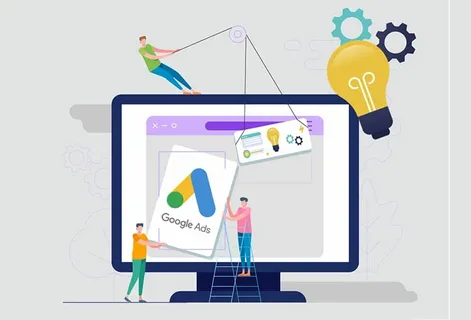
Introduction
Google Ads for Videos is an advertising platform provided by Google that allows businesses to showcase their videos on various Google-owned platforms such as YouTube, Google Display Network, and Google Partner Sites. This powerful tool enables businesses to reach a larger audience, target specific demographics and measure the results of their video ad campaigns.
To use YouTube Ads, businesses can create a video ad and bid on specific keywords, demographics, and placements. When a user searches for or watches a video related to the targeted keywords, demographics or placements, the ad will appear before, during, or after the video. This allows businesses to reach potential customers while they are actively engaged in watching videos online.
What Are Google Ads for Videos?
Google Ads for Videos are a powerful advertising tool that allows businesses to promote their products or services through video content on various platforms. These ads appear before, during or after the video content and can reach a large audience. With Google Ads for Videos, businesses can target specific demographics, interests or keywords to ensure their ads reach the right viewers. This type of advertising allows for greater engagement as videos have the ability to capture attention and effectively convey messages. By utilizing Google Ads for Videos, businesses can enhance brand awareness, drive traffic to their websites and ultimately increase their sales.
Why Should You Use Google Ads for Videos?
1. Reach a Larger Audience
Reaching a larger audience is one of the key benefits of using Google Ads for videos. To maximize your reach, follow these steps:
- Create a compelling video ad that captures attention.
- Set up a Google Ads account and choose the video campaign type.
- Define your target audience by considering their demographics, interests, and behaviors.
- Set your budget and bidding strategy to ensure optimal ad exposure.
- Create an ad group and ad that align with your target audience and marketing goals.
- Monitor and optimize your campaign regularly to improve performance and reach.
2. Target Specific Demographics
When using Google Ads for videos, targeting specific demographics can greatly enhance the effectiveness of your campaigns. Below are the steps to focus on particular demographics:
- Identify your target audience: Determine the demographics that align with your product or service.
- Use Google Ads tools: Utilize tools like Google Analytics to gain insights into your website visitors’ demographics.
- Create custom audiences: Build custom audiences based on age, gender, location, interests, and other relevant factors.
- Refine your targeting: Narrow down your target audience by adjusting your demographics settings to reach the most relevant users.
- Monitor and optimize: Continuously monitor the performance of your ads and make adjustments to optimize your targeting for better results.
3. Increase Brand Awareness
- Create compelling and engaging videos that showcase your brand’s unique value proposition.
- Identify your target audience, ensuring your videos are relevant to their interests and needs.
- Utilize precise targeting options such as demographics, interests, and geographical locations to reach the right audience.
- Optimize your ad placements to ensure maximum visibility and exposure for your videos.
- Implement remarketing strategies to repeatedly expose your brand to interested viewers.
What Types of Videos Should You Advertise with Google Ads?
As you consider using Google Ads for your video content, it’s important to understand which types of videos are most effective for advertising. Each type of video serves a different purpose and can target a specific audience. In this section, we will discuss the different types of videos that are best suited for Google Ads, including promotional videos, product demonstrations, how-to videos, testimonials, and event recaps. By understanding the strengths of each type of video, you can choose the best approach for your advertising goals. Visit upskillrocket
1. Promotional Videos
To create effective promotional videos with Google Ads, follow these steps:
- Identify your target audience: Determine who your ideal customers are and what message would resonate with them.
- Set clear objectives: Define the goals of your promotional videos, such as driving sales, increasing brand awareness, or generating leads.
- Create engaging content: Craft compelling videos that capture attention, tell a story, and showcase the unique selling points of your product or service.
- Optimize for keywords: Conduct keyword research and incorporate relevant keywords in your video titles, descriptions, and tags to improve visibility in search results.
- Choose the right ad format: Select the appropriate ad format, such as in-stream ads, video discovery ads, or bumper ads, based on your campaign objectives and target audience.
2. Product Demonstrations
Product demonstrations are an effective way to showcase the features and benefits of your products using Google Ads for Videos. To create successful product demonstration ads, follow these steps:
- Identify the key features and unique selling points of your product.
- Create a script and storyboard that highlights these features and demonstrates how the product solves a problem or meets a need.
- Film or create high-quality visuals that clearly show the product in action.
- Write a compelling ad copy that grabs the viewer’s attention and highlights the value of the product.
- Use engaging visuals, such as close-ups and slow-motion, to enhance the viewer’s understanding of the product.
3. How-to Videos
Creating how-to videos can be a valuable strategy when using Google Ads for videos. To effectively leverage this format, follow these steps:
- Identify your target audience and their specific needs.
- Research popular topics within your niche that align with your audience’s interests.
- Create engaging and informative videos that provide step-by-step instructions on how to accomplish a specific task.
- Enhance the search visibility of your videos by optimizing their titles, descriptions, and tags with pertinent keywords.
- Promote your how-to videos through Google Ads, targeting users who are actively seeking instructional content.
4. Testimonials
Testimonials are a powerful way to advertise your products or services through Google Ads for Videos. By featuring satisfied customers sharing their positive experiences, testimonials can help build trust and credibility with potential customers. They provide social proof and demonstrate the value and benefits of your offerings.
When using testimonials in your video ads, make sure to choose compelling stories that resonate with your target audience. Highlight specific results and outcomes achieved by using your products or services. Testimonials can effectively persuade viewers to take action and become loyal customers.
5. Event Recaps
Event recaps are a great type of video to advertise using Google Ads. They allow you to showcase highlights and key moments from an event, generating excitement and interest in your brand or organization.
Here are the steps to set up a Google Ads video campaign for event recaps:
- Create a Google Ads account.
- Choose your campaign type, such as Video or Display.
- Set your budget and bidding strategy based on your advertising goals and budget.
- Define your target audience, considering demographics, interests, and location.
- Create your ad group and ad, ensuring your ad includes captivating footage from the event and a compelling call-to-action.
- Monitor and optimize your campaign regularly, analyzing the performance metrics and making necessary adjustments to improve results.
Frequently Asked Questions
Google Ads is a popular online advertising platform that allows businesses to reach potential customers through various devices such as desktops, laptops, tablets and smartphones. It offers targeted advertising, cost control, measurement of success and campaign management.
The location of an ad on Google Ads can impact its performance and relevance to potential customers. By targeting specific locations, businesses can reach their desired audience and increase the chances of ad engagement and conversions
A good beginners guide to using Google Ads for videos includes setting up the platform properly, linking ads to relevant terms and targeted keywords, and continuously refining the campaign conditions to reach the right audience. It is also important to utilize Google's resources such as the Google Ads Creator Template and the People tab to create and monitor ads effectively.
Linking your Google Ads account to other marketing platforms and software systems can help optimize your ad campaigns and reach a larger audience.
Google Ads allows businesses to set a daily spending limit and an ad spend cap, giving them control over their advertising budget. This allows businesses to allocate their budget effectively and only pay for actual results, such as website clicks or business calls.
